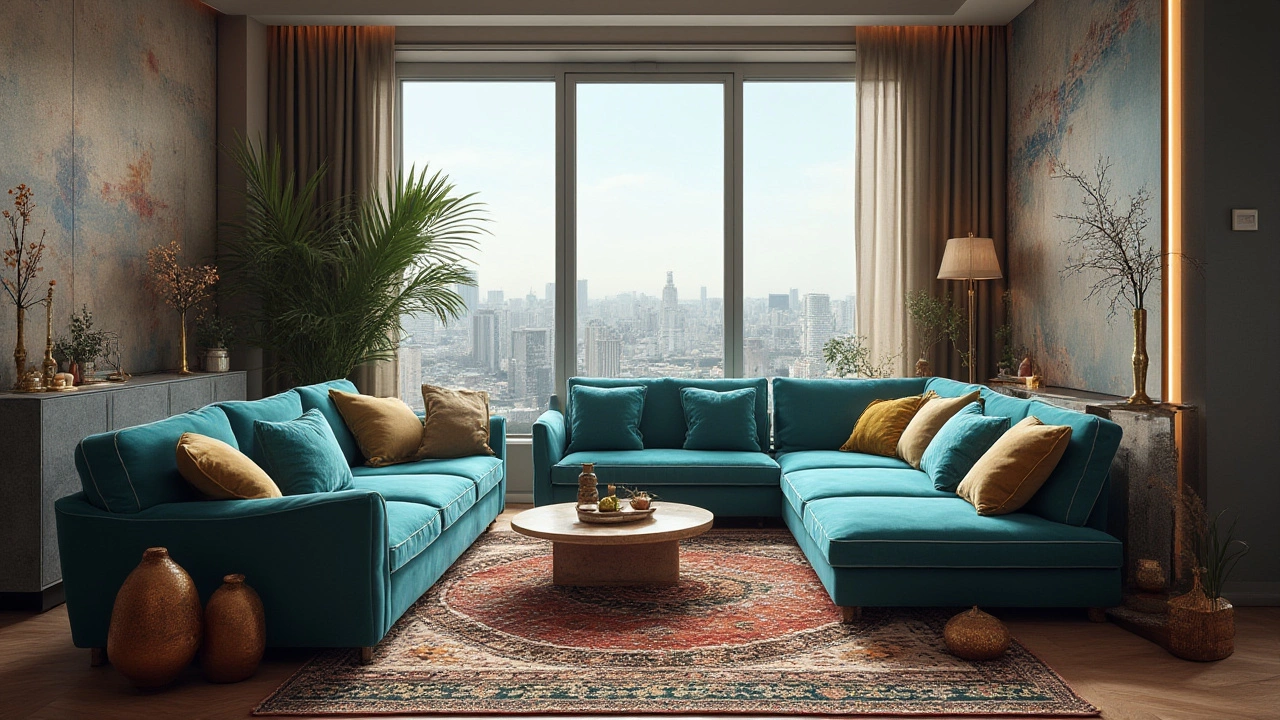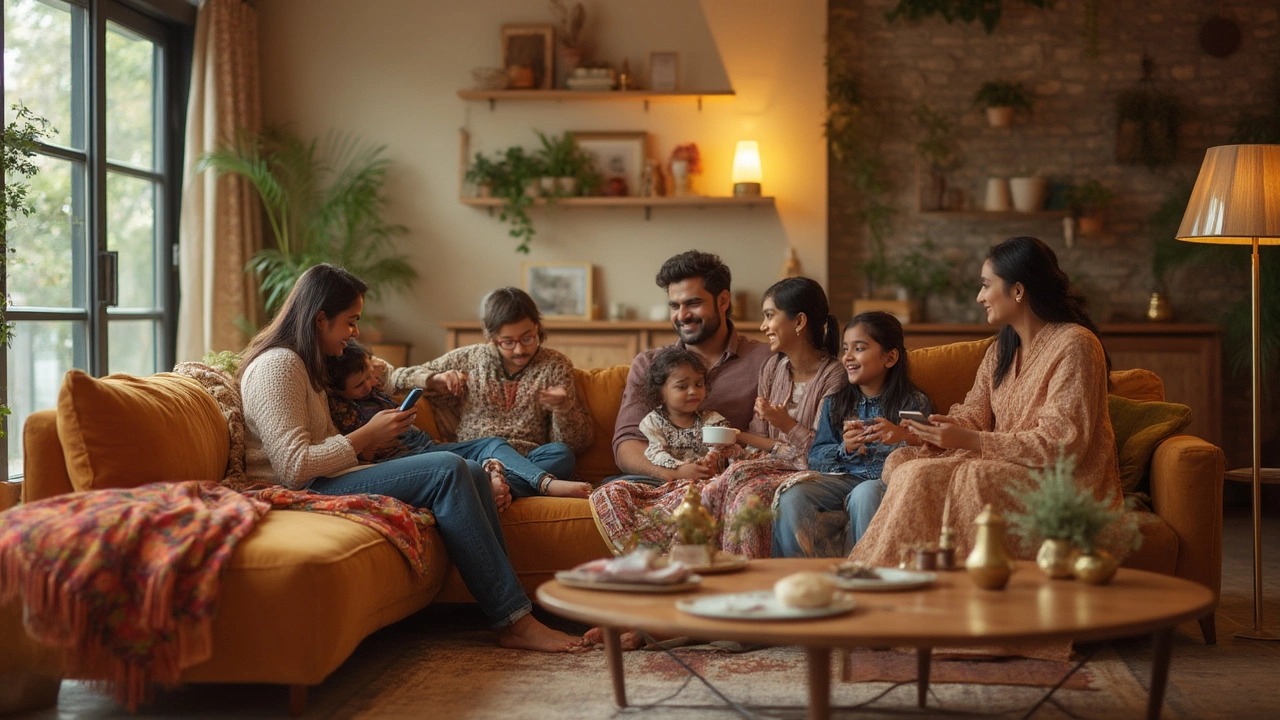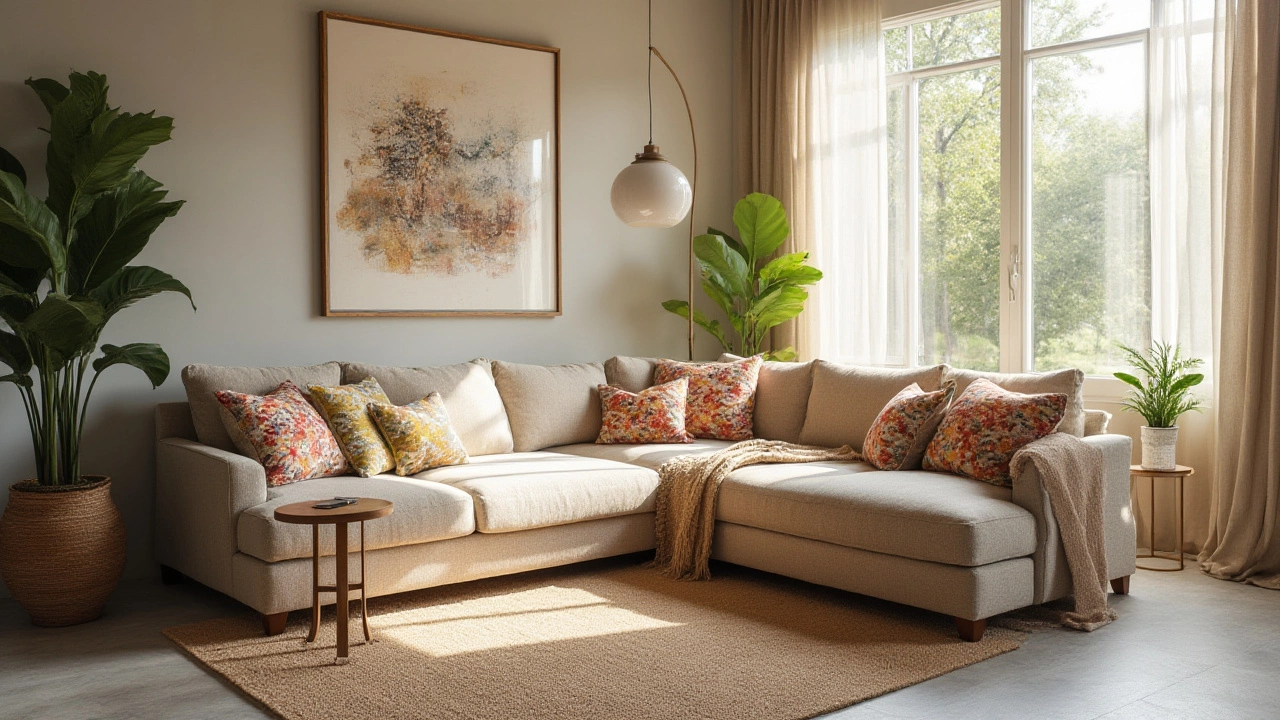If you ask ten people about corner sofas, you'll get as many opinions as you do responses. Some swear they're the golden ticket to living room bliss, making family movie nights cozier. Others turn their nose up—"Aren’t those for the nineties?" they say. It’s no wonder, with so many conflicting ideas, people keep asking: are corner sofas dated?
Corner Sofas Through the Decades: Love, Hate, and Reinvention
Corner sofas—or sectionals, as our American cousins call them—have a history that stretches back to the Victorian era’s modular parlor furniture. While they found their modern groove in the 1970s when open-plan living hit Australia hard, fashion is ruthless: chunky beige corner units eventually screamed suburbia and 90s movie sets. Still, sales figures make it clear: Aussies never stopped loving their L-shaped sofas. According to a 2023 Interiors Australia survey, 41% of respondents listed a corner or modular sofa as their top living room wish-list item.
My own dad—who still thinks microwaves are a passing fad—once called Otis’s favorite corner sofa "the pinnacle of lazy parenting." Yet that old behemoth was the heart of every family birthday and rainy afternoon. Designs may have evolved from floral tapestry to sleek, water-repellent fabric, but the idea hasn’t changed: something massive, inviting, and able to handle a rugby scrum of mates.
So why did corner sofas ever get called out as "dated"? If you poke at popular design forums or watch renovation reality TV, there’s a pattern: after a period of huge corner units dominating homes, tastes swing the other way. Smaller, modular benches or minimalist couches dominated the late 2010s, reflecting the shrinking urban footprint. People craved more adaptable seating: think ottomans, armchairs, and daybeds that could be shuffled around after a few espresso martinis.
Yet, here in 2025, style influencers and interior designers are circling back around. Australian magazines like Belle and Real Living featured corner sofas throughout their last autumn issues—often in deep jewel tones, curved silhouettes, or modular formats. Modern corner sofas are a far cry from the boxy, overload-you-with-pillows styles of the past. Sessional living is back, and it’s looking fresh. And with the Australian Bureau of Statistics showing the average living room is slightly bigger now thanks to newer suburban builds, there’s actual room to play.
What’s Driving the New Era of Corner Sofas?
So why are these big, bold sofas hot again? Simple: functionality and flexibility. When you’ve got a couple of kids running around—like Otis darting from one HR battle with homework to another—having a unit that hugs the whole room just makes sense.
A corner sofa easily anchors a living space, especially in open-plan layouts (which, by the way, 78% of newly built Aussie homes now boast, according to 2024 property reports). The L-shape cleverly divides zones, giving you a subtle barrier between the chaos of the entryway, the TV nook, and a spot for sneaky work-from-home stints. Modern models are increasingly modular—a fancy way of saying the seats and backs can be rearranged. Want to switch the chaise to the left? No problem. Need to shift everything to fit a new bookshelf or gaming setup? Too easy.
Another big driver is the hybrid home. After 2020’s work-from-home revolution, people want something to flop onto after Zoom hell, but it also needs to double as an emergency guest bed or gaming den. Today’s top-selling corner sofas include hidden storage—a lifesaver when you’ve got no interest in Marie Kondo-level tidiness—and even built-in USB ports or wireless chargers. Not exactly your nan’s musty L-shaped seat.
Then there’s style. Now, corner sofas come in finishes as wide-ranging as linen, weirdly soft velvets, or even eco-leather created from recycled ocean waste. Legs are sleeker, arms are thinner, and colours have moved way beyond brown and grey. If you’re worried about trends, designers urge you to look for pieces with clean lines and neutral fabric you can dress up with bold cushions. That way, you’ll never get stuck with a "dated" look again—instead, you can swap the cushions and throws to keep up.
A growing body of sustainability-focused buyers prefer investing in one big, multi-use sofa rather than several smaller, cheaply built pieces. It’s a smarter use of resources and leads to fewer skips overflowing on nature strip collection day.
| Year | % of Households with Corner Sofa | Top Material for Corner Sofas |
|---|---|---|
| 2010 | 16% | Microfiber |
| 2018 | 25% | Poly-blend |
| 2023 | 41% | Eco-leather |

Matching Corner Sofas with Modern Living Rooms
So you love the vibe of a corner sofa, but you’re after a room that screams 2025, not 1999. Here are a few tried-and-tested ideas—credit to the outnumbered, juice-box-wielding parents out there—for making it work.
First, measure everything. People joke that Aussies don’t use tape measures, but trust me, returning a sofa that won’t fit through a standard front door (82cm wide, in case you’re wondering) is an absolute nightmare. A "floating" sofa (not shoved against a wall) visually opens up your space—if you’ve got the room, let it stand proud with a walkway behind.
Textures are your friend. Pair a slick leather sectional with a lush wool rug. If you go for neutral upholstery (everyone’s favorite for hiding the worst of Paw Patrol-related stains), add colour via scatter cushions, bold wall art, or a statement lamp. If you stick to this rule, you’ll avoid the "beige box syndrome".
Think about configuration. Classic L-shapes are great for corner positioning, but U-shaped sofas create an inviting conversation pit around a coffee table—makes a mean party pad. Choose low-profile designs for smaller city apartments to avoid overwhelming the space, and high-backed, deeper units for family dens where comfort beats style.
Lighting makes a difference. Pair your sofa with an arc floor lamp or a row of soft-glow pendants, and you instantly nudge the space from "sad dad cave" to "boutique hotel lobby." Wall-mounted shelves behind the sofa are perfect for family photos and great novels (instead of leaving them for the "to-read" pile that’s now moved to the toilet)
Finally, plan your escape routes. In a Melbourne winter, there’s nothing worse than trying to sprint from the sofa to a kettle and ending up doing hurdles around the ottoman. Leave at least 90cm between your sofa and the next big piece of furniture. Trust me, your shins will thank you.
- Measure before buying
- Invest in modular sections
- Mix up the textures
- Choose flexible colours
- Light up the corners for ambience
Remember, functionality beats fleeting trends. The corner sofas in stores today are designed to outlast fashion cycles, and some even come with machine-washable covers—which, as every parent will agree, is possibly the most underrated design update since self-cleaning ovens.
Could Corner Sofas Actually Boost Your Living Space?
This might sound a little dramatic, but a good corner sofa can honestly transform how your family uses a room. A University of Queensland interior design study from last year found that living rooms with larger, well-placed sectionals saw a 27% increase in "time spent together" compared to those with individual armchairs or rigid two-seaters. That’s not just theory—I’ve seen it in my own house: movie nights run longer, games get rowdier, and you don’t end up fighting over the “good spot.”
The latest corner sofas offer add-ons: think built-in side tables, adjustable headrests, or recliner modules. These bells and whistles don’t just look cool—they turn one big chunk of upholstery into genuinely multi-purpose furniture. Suddenly, your living room is more comfy, flexible, and ready for both solo loafing and big family hangouts.
Space planning is key. A corner sofa lets you "zone off" a play area, a reading nook, or a tech-free chat spot, which is priceless if you’ve got kids or flatmates. Need the room to double as a guest crash pad? Some modular sofas convert to beds in seconds. Feeling fancy? Add a matching footstool, an end table on casters, or even a mini bookshelf behind the backrest—Instagram will love your effort.
If you're worried about a sectional making your room seem smaller, nope. As long as the proportions are right, a well-designed L- or U-shaped sofa draws the eye in and keeps the layout tidy. For renters (hear me, fellow Melbourne tenants), check if the manufacturer offers "knockdown" modules that break into manageable pieces—lifesaver for tight staircases.

Choosing the Right Corner Sofa for Your Aussie Home
If you’re about to take the leap, there are a few mistakes worth dodging. Probably the biggest: going for looks over lifespan. Cheap corner sofas from fast furniture chains look sweet for a month, then start sagging faster than a doona left outside in the rain. Aussie brands like King Living and Jardan have led the pack with clever modular sections, machine-washable textiles, and sturdy spring systems—so pay close attention to frame and fill materials. Kiln-dried timber frames, steel springs, and high-resilience foam survive the long haul (and the odd indoor trampoline session).
Don’t get seduced by gadgets you won’t use. Sure, USB chargers and drink coolers are fun, but if your family spends more time sprawled out with magazines and snacks than gaming, focus on size and comfort. Pick a style that nods to your house’s era: mid-century lines for post-war Melbs, sleeker shapes for new builds, or rounded silhouettes for inner-city apartments.
If you’ve got pets (two words: dog hair), go for tightly-woven fabric or stain-proof microfiber. Removable covers are a life-saver—why not get a spare set in a bold colour to freshen things up for parties? Finally, ask about delivery: can it be assembled in tight entryways, or does it come in monster boxes that need three burly blokes to wrestle through a 19th-century door frame?
Are corner sofas dated? Not a chance. As long as your living space fits one, modern versions will stay relevant—and comfortable—way longer than whatever TV console is trending on TikTok this month.

